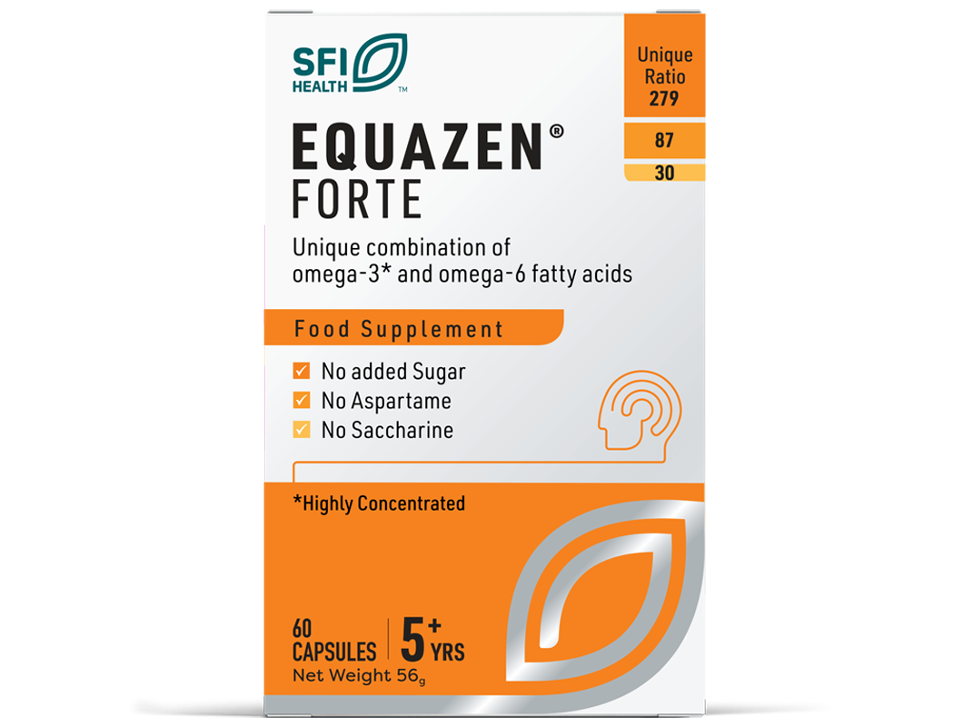Triple strength formula to support concentration, learning and healthy brain development in children and adolescents 1-4

As a kid, growing up comes with many challenges. So it’s important to ensure a balanced diet of essential nutrients for healthy brain development—including essential fatty acids (EFA). If you notice that they may need help concentrating, and you want to try an essential fatty acid supplement, choose one with a simplified daily dose. Adding Equazen Forte to their diet helps provide EFA supplementation that may give them the support they may need to help increase concentration and help improve learning capabilities but with a simplified daily dose they can fit into their busy schedules.
Equazen Forte is clinically researched to support children and adolescents 5+ years with learning and behavioural concerns. Equazen Forte contains all the proven ingredients that the Equazen range provides.
Equazen® is proud to sustain Friend of the Sea (FOS), the project of the World Sustainability Organization to promote environmental conservation. Friend of the Sea has become the leading certification standard for products and services which respect and protect the marine environment.
Such as reading, writing and drawing
By increasing attention span and focus
By providing necessary essential fatty acids support for brain development
Omega-3 and Omega-6 are essential fatty acids that are vital for good health. Since your body is unable to produce some of these essential fatty acids, they must be obtained through your diet.1
Equazen is a unique composition with a scientifically proven ratio of EPA:DHA:GLA = 9:3:1, which has been proven to help improve cognitive functions in children who had learning difficulties. EPA, DHA and GLA all play an important role in brain development.2
Food for thought: Did you know that children who are displaying signs of inattention may have different levels of Omega-3 and Omega-6 in their blood? Adding Equazen to supplement their essential fatty acids intake may help.
We take great pride in our unique Omega-3 with Omega-6 food supplements and use only the best ingredients and pharmaceutical standard processing techniques, in order to maintain the high quality that our customers have come to expect over the years.
Equazen® Forte: Suitable for use in children aged 5 years onwards
Starting dose: Take 2 capsules per day for the first 3 months
Maintenance dose: Take 1 capsule per day thereafter
Always read the label and follow the instructions for use
Safety
Equazen is well tolerated. Tolerability data from clinical investigations as well as the post-marketing experience support the safety profile of Equazen formulations.
Equazen® gelatine used in the clear capsules is certified halal.
Each capsule contains:
Omega-3 fatty acids (fish oils) of which: 550 mg
EPA (eicosapentaenoic acid) 279 mg
DHA (docosahexaenoic acid) 87 mg
Omega-6 fatty acids (Evening primrose, Oenothera blennies L.) of which: 120 mg
GLA (gamma-linolenic acids) 30 mg
Lifestyle insight
Your child is not alone, as many as 1 in 10 children may experience learning difficulties. Learn what they are so you can quickly identify if your child may need help.
Packaging and product claims may vary depending on country-specific regulations. Products available in selected markets only.
References